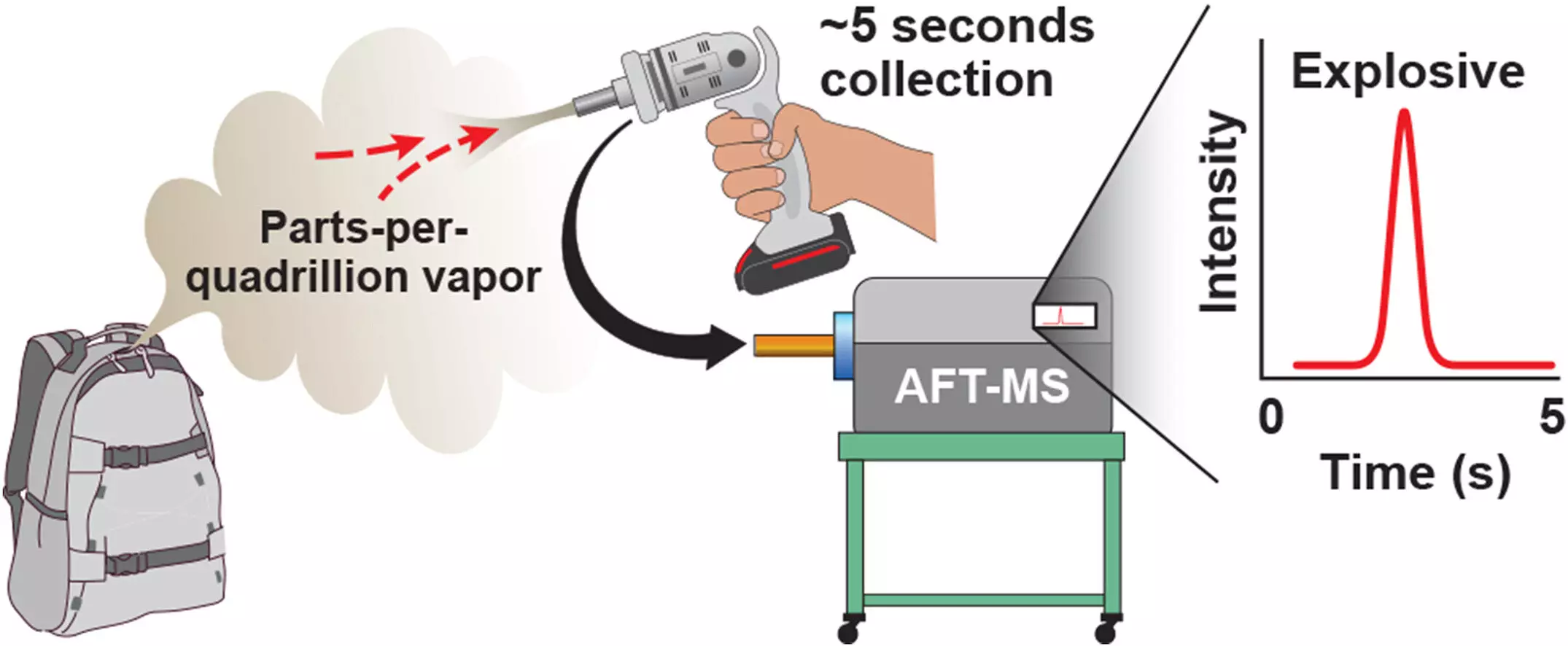The realm of explosives detection technology has taken a significant leap forward with recent advancements made by scientists. A groundbreaking method, described in the journal Talanta, has been developed to detect minuscule amounts of hard-to-detect explosives from distances exceeding eight feet. This innovative approach marks a significant departure from traditional methods that typically require physical contact with materials to conduct detection.
Unraveling the Science Behind the Breakthrough
The detection process involves identifying trace amounts of explosives such as nitroglycerin and RDX, a key ingredient in C-4, through the air at extremely low concentrations within a matter of seconds. These substances emit only a few molecules, making them exceedingly difficult to pinpoint amidst a sea of common air molecules like nitrogen and oxygen. However, thanks to the cutting-edge explosives detection equipment developed by scientists, it is now possible to detect these elusive substances at levels as low as less than 10 parts per quadrillion.
The recent research conducted at the Department of Energy’s Pacific Northwest National Laboratory represents a significant milestone in the field of explosives detection. While previous methods could only detect explosives from mere fractions of an inch away, the latest technology enables detection from distances ranging from two to eight feet, depending on the specific material. This expanded range has been made possible through years of dedicated research and development efforts aimed at enhancing the sensitivity and efficacy of explosives detection mechanisms.
The implications of these advancements are far-reaching, with potential applications spanning various industries, including defense, security, and law enforcement. The technology developed by the team at the Pacific Northwest National Laboratory has already been licensed to BaySpec Inc., a leading manufacturer of spectral sensing instruments based in Silicon Valley. The company is poised to launch a commercial product leveraging this cutting-edge technology for the detection of explosives and narcotics by 2025.
One of the key innovations driving this breakthrough is the concept of standoff detection, which enables the identification of materials from a safe distance without the need for direct contact. This approach is particularly valuable in scenarios involving hazardous or inaccessible environments where traditional detection methods may be impractical. By harnessing the power of standoff detection, researchers aim to enhance safety and security measures by proactively identifying and neutralizing potential threats.
Central to the success of the explosives detection technology is a state-of-the-art handheld air sampler developed at the University of Washington. This cutting-edge device is capable of drawing in approximately 300 liters of air per minute, allowing researchers to collect sufficient air samples for analysis within a matter of seconds. The collected air is then filtered to capture vapors, which are subsequently analyzed using a mass spectrometer for precise identification of target molecules.
A critical component of the detection process is the atmospheric flow tube, a two-foot-long device where molecules are ionized before being sent to the mass spectrometer for analysis. This extended tube length provides additional time for target molecules to be ionized, thereby enhancing the sensitivity and accuracy of detection. As a result, researchers can identify explosives at sub-attomolar levels, underscoring the remarkable precision and reliability of the detection system.
Looking ahead, the team at the Pacific Northwest National Laboratory remains committed to advancing the frontiers of explosives detection technology. By continuously refining and optimizing their detection methods, researchers hope to expand the scope of applications for standoff detection, including the detection of additional explosives, drugs, and other chemical threats. Through ongoing collaboration and strategic partnerships, the future of explosives detection technology appears brighter than ever before, paving the way for enhanced security measures and public safety initiatives.


Leave a Reply